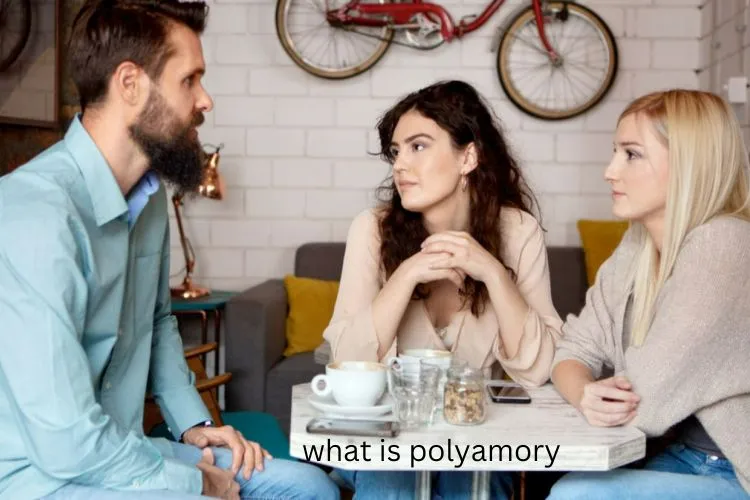Have you ever wondered what it’s like to be in an unconventional relationship? Do you find it difficult to stay loyal to one person and find yourself falling for more than one at a time? Has it occurred to you that you fall under a specific type of non-monogamous relationship style? If you answered yes, then you may want to read more to know what polyamory is and who is a polyamorous person because so do you!
Our team of expert psychologists is experts at dealing with relationship/dating distress. Speak to them immediately at Ganeshaspeaks.com to gain a better insight into your relationship.
What does Polyamory Mean?
A new term for a distinct sort of relationship is Polyamory. Poly is a Greek word that means “many.” Amory, which is Latin for “love,” It’s against the rules to combine Greek and Latin roots into one term, but erotic or romantic love is also against the rules when it comes to loving more than one person simultaneously. According to a well-known author and psychologist, polyamory has less to do with the number of people involved and more to do with an internal attitude of allowing love to develop without expectations or demands that it look a certain way. Polyamory has become an umbrella term for numerous types of non-monogamous, multi-partner connections or non-exclusive sexual or romantic relationships. The Oxford English Dictionary defines the term “polyamory” as “the practice of engaging in multiple romantic (and typically sexual) relationships, with the consent of all the people involved.”
What is a Polyamorous Relationship?
People who are in numerous love relationships at once are said to be polyamorous. Any race, gender, social class, ethnicity, or culture can identify as polyamorous, as can any gender. If a Relationship is a Polyamorous one, it means both partners have relationships with other partners as well. They have the consent of those people and indulge in sexual activity. Each partner in many polyamorous relationships is aware of the other. Relationships or friendships between partners are also possible. Sometimes these relationships are hierarchical and sometimes they are equal. Similarly, there are stories from ancient Indian mythology that support the prevalence of polyamorous relationships. In an extremely open and free society, as depicted in the stories from Satya Yuga, sexual intercourse wasn’t considered a taboo.
Difference between Polyamory and Polygamy: The practice of having close, ongoing relationships with multiple people is known as polyamory. A polyamorous individual may have numerous romantic partners or may be open to doing so. On the other hand, polygamy entails having numerous spouses.
You can also talk with our online couples counseling to understand it better.
Common Types of Polyamory
- Hierachical Poly: Involves both, Primary Partners: A primary partner is at the top of the hierarchy; this is the person with whom you live, have children, or even marry. Secondary partners: Secondary partner(s) may not be as involved in your life as a major partner; for example, you may not share residence or finances but remain completely dedicated to each other.
- Thruple: Here, one person is engaged with two different people or all three are dating each other, also known as a ‘triad.’
- Quad: Here four people are involved, with each member of one couple dating one member of another polyamorous couple.
- Full quad: Four people are sexually or romantically involved with each other, may or may not be their primary partners.
- Polycule: It is a network of romantically connected people. People are all interconnected consensually with each other as a web.
- Metamour: An individual’s partner, with whom they are not connected either sexually or romantically
- Paramour: An outside member of a marriage or a union. For example, your spouse’s girlfriend
- Solo Polyamorous: When a person is their own company and does not want a primary partner but may be a secondary or casual partner to multiple others.
- Compersion: The opposite pole of jealousy; a person is genuinely happy for their partner when they’re happy with another partner.
- Nesting Partner: One or several partners who live with you may or may not be in a married relationship.
- Vee: A particular type of thruple, one partner acts as a hinge, dating two romantically involved people who are uninvolved with each other.
- Polysaturated Relationships: More than two people are involved in a polysaturated situation. One is not looking for more people to build a relationship with.
Myths about Polyamory
1) Polyamory is Cheating-In reality, people are open with their relationship situations to their partners if they choose to have one. So, there is no cheating.
2) Polyamorous people are afraid of commitment- They can form meaningful relationships. Their styles may differ from conventional marriages or couples, but they may have committed relationships if they choose to do so.
3) Polyamorous people don’t easily get jealous; they do feel jealous. However, they see it as insecurity or fear to work on and overcome.
4) Polyamorous people are only interested in sex- Like other romantic relationships, these people are interested in sexual activities but also in developing loving and intimate relationships.
“True Love in this differs from gold and clay, That to divide is not to take away.
– Epipsychidion.”
What are your relationship issues? Talk to our wellness experts at Ganeshaspeaks.com to make your relationship meaningful.



